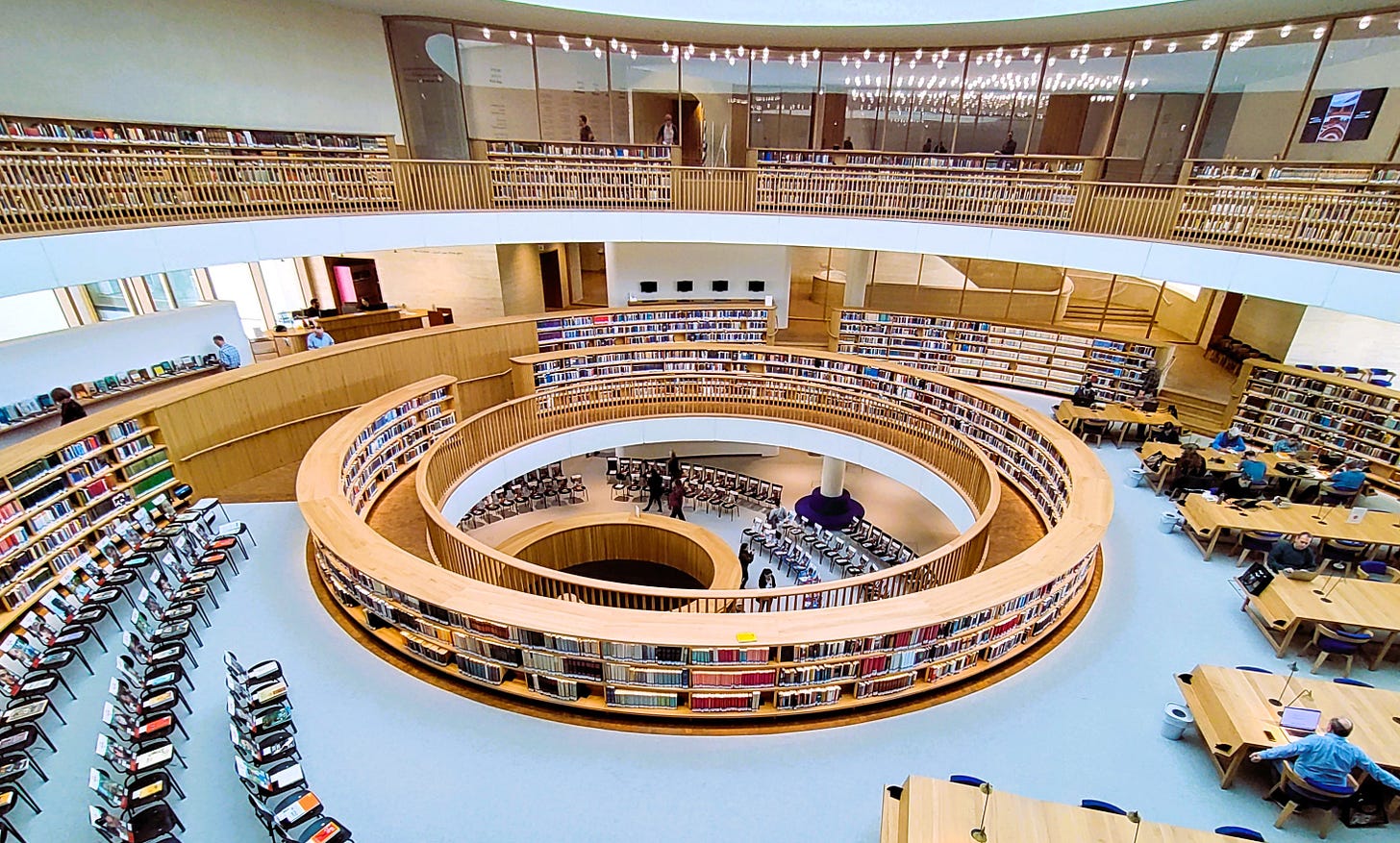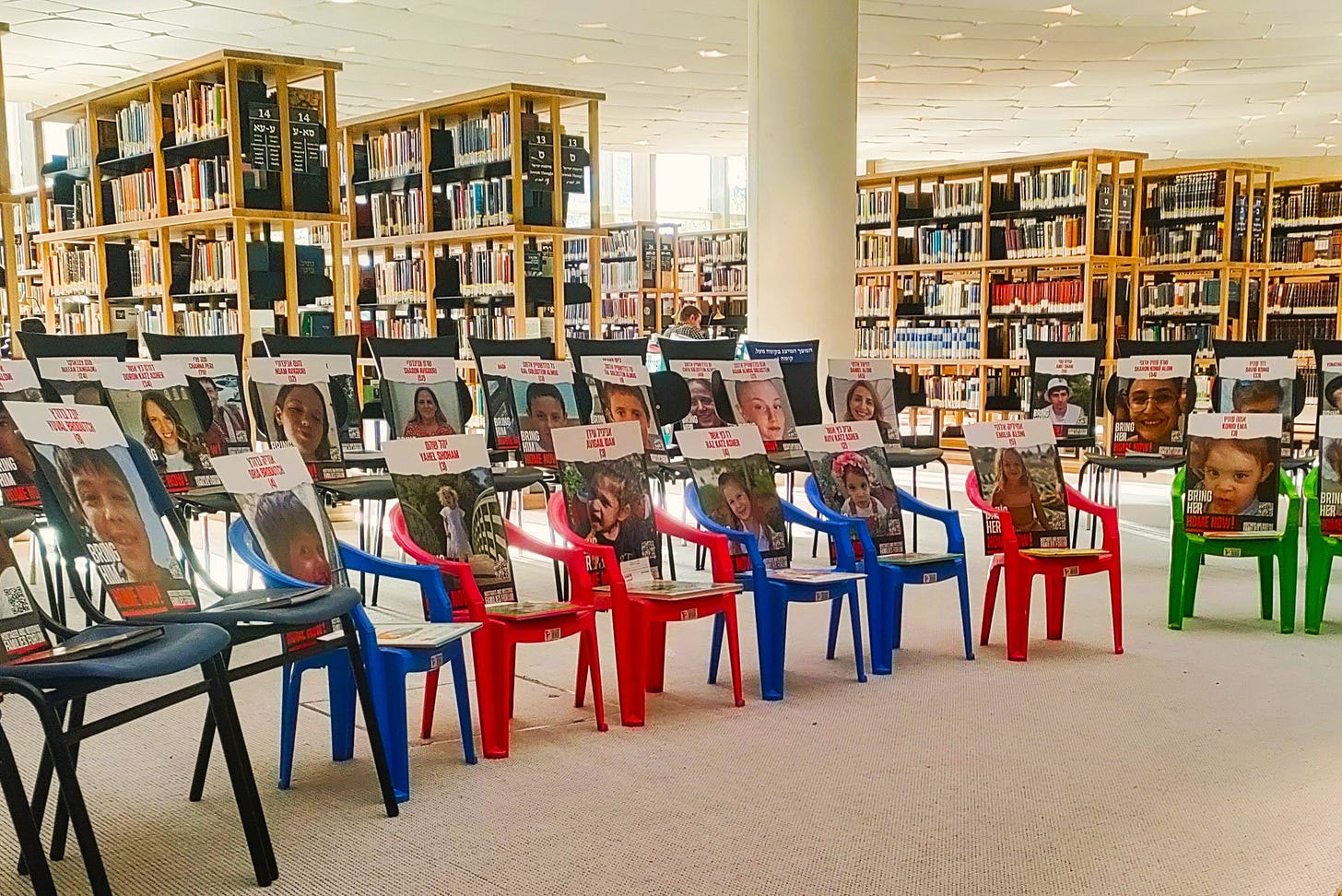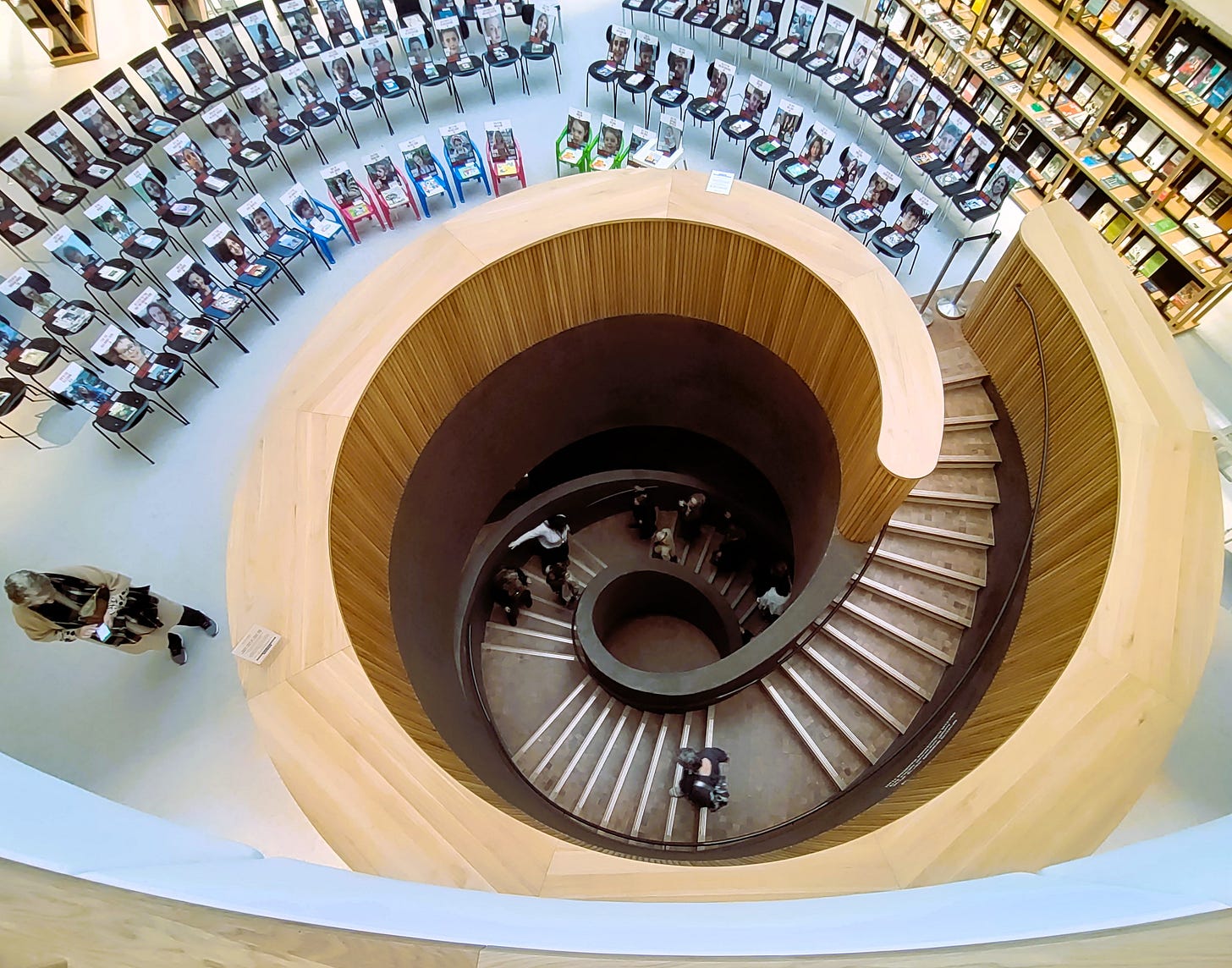Israel is a noisy place. We Israelis talk on our phones, all the time, everywhere. We argue, openly, about everything. We honk our horns as soon as traffic lights turn the palest shade of green.
Since the war broke out, new layers of sound have entered the cacophony. Air raid sirens rise and fall at a curious moderato. Ambulance sirens blare in open fifths. F-16s provide the occasional timpani drum roll. The overall effect is one of Ivesian dissonance, without the folksy charm.
One day this week, in need of quiet, I headed to the National Library of Israel, an imposing new building opposite the Knesset in Jerusalem. The Library is the most important public facility to be built in Israel in 30 years. (The previous was the Supreme Court in 1992.) A decade in the making, it was scheduled to open October 17, with a week of celebratory events set to follow.
But like every cultural venue in Israel, the National Library was thrown into emergency mode on October 7. Precious artifacts from the Library’s collection, which had just been mounted in its inaugural exhibition, “The Treasures,” were carted away for safekeeping from Hamas rockets—among them, Maimonides’ autographed 12th century Commentary on the Mishna, and the 13th century Bible manuscripts known as the Damascus Crowns. The Library remained closed for several weeks, then quietly, unceremoniously, opened its doors two weeks ago.
The National Library houses millions of books, manuscripts, photographs, newspapers, maps, and more (think Library of Congress). But it is the library user who takes center stage. Most of the collections are stored underground, while the Main Reading Hall, an elegant, softly lit space with broad tables spaciously set among banks of bookcases, spirals upward over three stories (think Guggenheim Museum).
At the center of the hall’s main floor, a circular bookcase accommodates various editions of the Talmud. The Swiss architects who designed the building decided to make the Talmud the focal point of the hall after learning that the mysterious, oversized volumes, heavily used by visitors to the old library, were foundational to Jewish history and thought.
Now, however, the Talmud tractates have been upstaged by an impromptu exhibition, “Every Hostage Has a Story.” 240 chairs fan out through the hall, serving as easels for photographs of the Hamas-held hostages. There are child- and adult-sized chairs. The innermost chair is a highchair for Kfir Bibas, the youngest hostage, aged nine months at the time of his kidnapping.
On each chair, a book related to each hostage’s interests awaits him or her. Meir Shalev’s My Wild Garden rests on the chair of 79-year-old gardener, Channah Peri. Joy Adamson’s Born Free has been placed on the chair of 30-year-old veterinary nurse Doron Steinbrecher. Amiran Raviv’s The Kiss That Got Lost has been left for three-year-old Avigail Idan, whose parents were murdered by Hamas. Peeking out of each book is a personal library card with the return date—NOW—stamped in red.
I found quiet at the Library. But it was a quiet of emptiness, not tranquility. Until the hostages are returned, our National Library will have a void at its core, as will each of us.







Your beautiful writing opens my heart even more to the emptiness of the void Israel feels. May the pause truly lead to return of hostages. The books chosen in their honor speak volumes.
Thank you for letting us into this space. I hope the hostages who have returned have received their books. And I pray the remaining hostages will soon receive theirs as well.